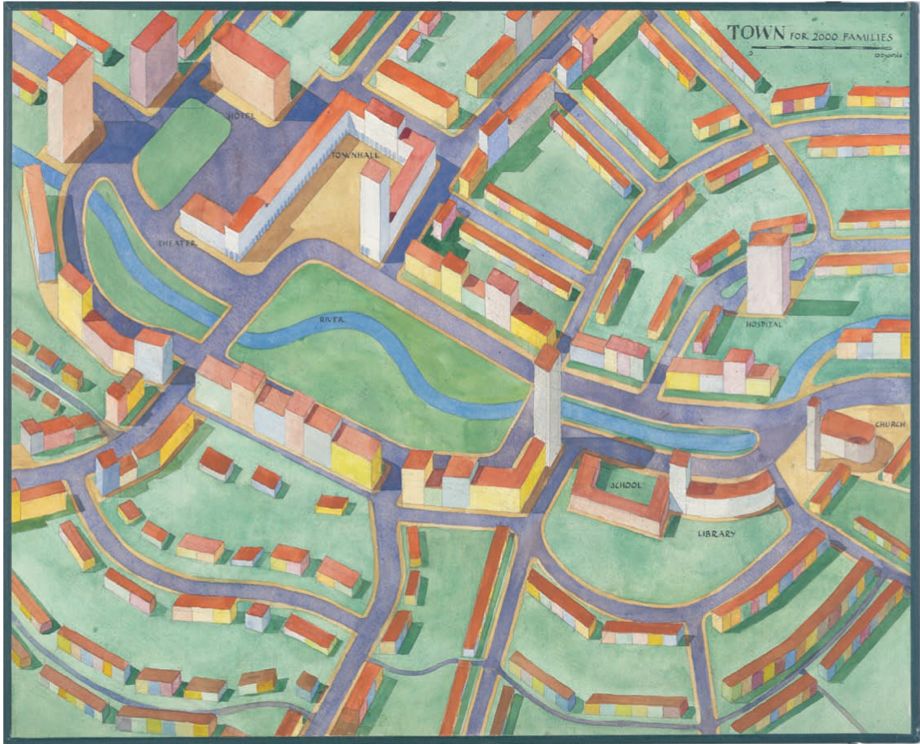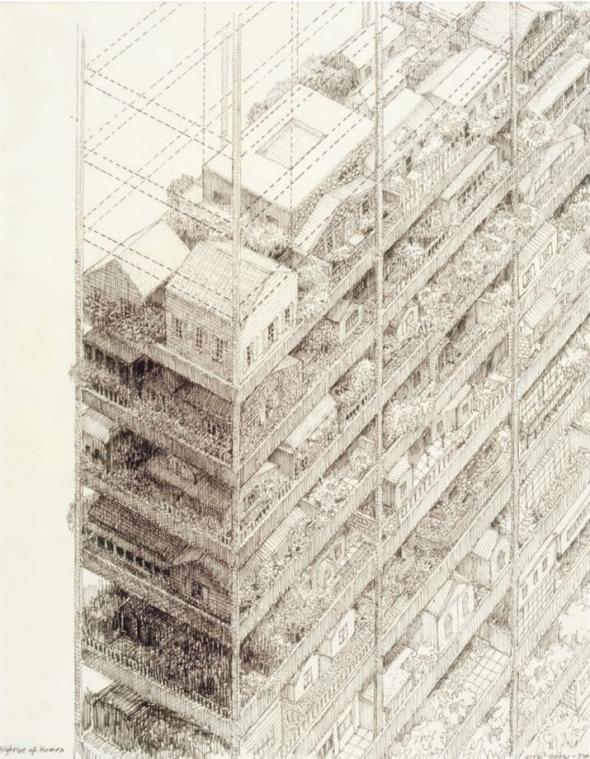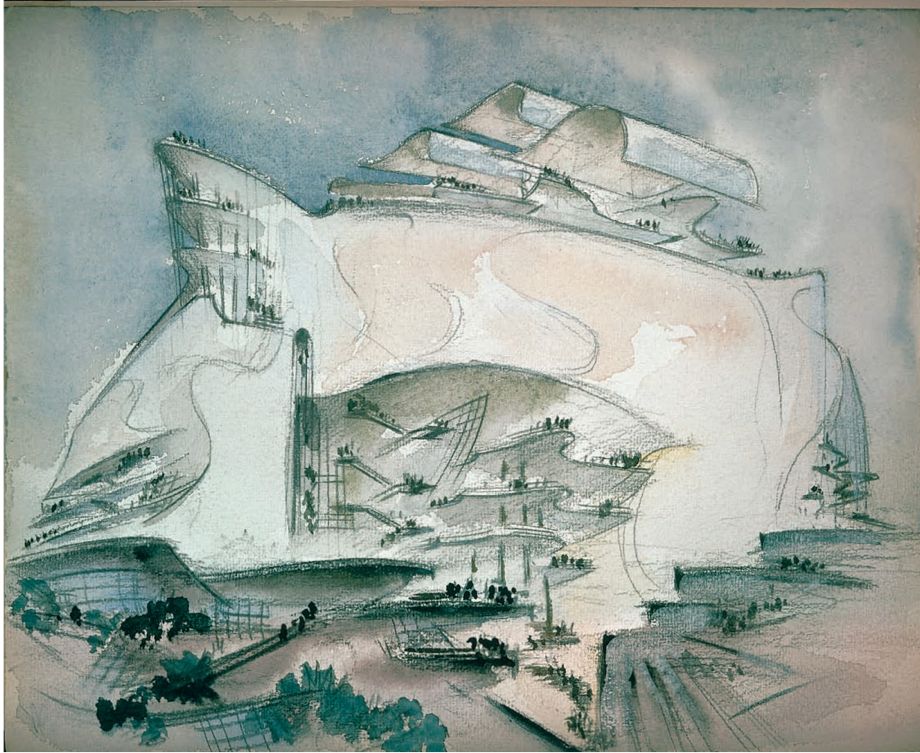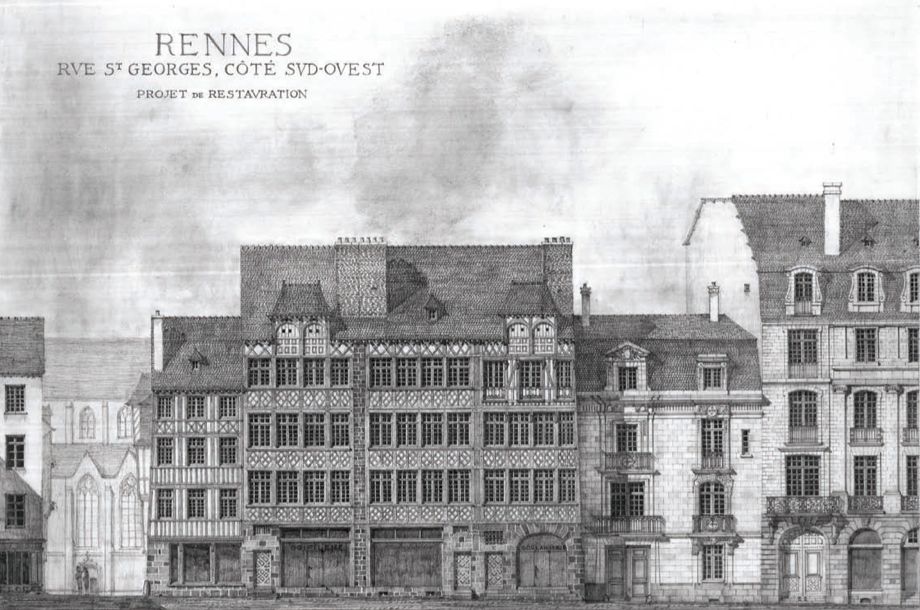Submitted by WA Contents
Extraordinarily Beautiful Architectural Drawings From the World’s Greatest Architects
United Kingdom Architecture News - Feb 10, 2014 - 11:34 14241 views

Josef Frank's concept for a Town for 2000 Families, aerial perspective, c. 1950
Modern architectural drawing is usually computer-generated. The resulting hyper-realistic digital renderings often trick the eye and make it difficult to discern the imagined from the real.

New York architect James Wines' 1981 proposal for housing in densely populated areas. The ink sketch argued for turning high-rises into framed plots that could include houses and gardens, with internal streets, shops and offices to create a village atmosphere.
But throughout the 20th century, architects more often used pen and pencil sketches, drawings, paintings, collage, and other media to create more poetic vision statements for proposed structures.

Le Corbusier outlined his vision for Buenos Aires, which included hiding traffic underground, in this 1929 lecture diagram.
100 Years of Architectural Drawing—a recently published book by Neil Bingham, a design and architecture historian who is the consulting curator of architectural drawings at the Royal Academy of Arts, London—highlights 300 architectural drawings from the 20th century that illustrate the evolution of the form.

Arne Jacobsen's pencil, watercolor, and gouache rendering of a Texaco Gas Station in Copenhagen, 1936, still in use today and considered an icon of modernity
“In this survey of architectural drawings, we can trace the historical visual narrative of 20th century architecture in design and draughtmanship,” Bingham writes. “One of tradition, experiment and beauty.”

During World War II German architect Hans Scharoun surveyed bombed-out buildings and spent his evenings making pencil and watercolor drawings of architectural fantasies like this example from 1943-45.
The book features full-color illustrations from the last century by architects including Frank Lloyd Wright, Le Corbusier, Mies van der Rohe, Frank Gehry, and Zaha Hadid.

Stephen Kanner's gouache painting for Harvard Apartments in Los Angeles, 1989, captured his California pop style.
Bingham breaks the century into chronological periods, highlighting the traditional drawings prevalent in the early 1900s, the modern midcentury period, and the alternative drawing styles of the 1960s and early '70s.

Eliel Saarinen's winning competition design for the Parliament House in Helsinki was rendered with ink, gouache, and watercolor in 1908. Often considered his best design, it was never built.
The book includes elaborate drawings of unbuilt projects (like Eliel Saarinen’s proposed Helsinki Parliament House) and simple renderings of major architectural monuments like the Sydney Opera House (below) that thrillingly capture the silhouette of a now-iconic structure with the seeming simplicity of a paper napkin sketch.

Danish architect Jorn Utzon's preliminary sketch for the Sydney Opera House, c. 1960, made with pencil and colored crayon on tracing paper.
“From our perspective today, in which the computer-aided design [CAD] drawing dominates,” Bingham writes, “the twentieth century appears as the golden age of traditional architectural hand-drawing.”

French architect Raymond Cornon's rigorous, highly realistic pencil sketch of the restoration of a half-timbered building in Rennes, France, 1965
by Kristin Hohenadel
**Kristin Hohenadel's writing on design has appeared in publications including the New York Times, Fast Company, Vogue, Elle Decor, Lonny, and Apartment Therapy.
> via Slate
